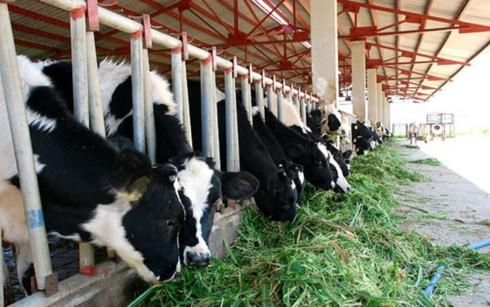|
Foreign-owned
agriculture leverages FTA tax removals

Dang
Dinh Quyet, a representative of the Ministry of Agriculture and Rural
Development’s Livestock Production Department, told VIR that last year, the
rate of foreign enterprises asking permission from the ministry for importing
animal feed materials into
“Foreign
animal feed producers are strongly expanding their business in
According
to the Ministry of Industry and Trade, under its commitments this year,
Vietnam will have to remove 669 tariff lines under ATIGA, and 588 tariff
lines under ACFTA. Average import tariffs for livestock-related products will
be reduced to nearly 0%.
These
products include beef, pork, sheep, goat, poultry, and many types of frozen
aquatic products, as well as dairy products, animal feed, and poultry eggs.
Under
the ASEAN Economic Community (AEC) and ACFTA, investors may concentrate
production lines in a chosen partner country, and then export finished
products tariff-free to other ASEAN countries as well as to ASEAN’s
free-trade partners in the region (
The
Presently,
foreign firms hold the lion’s share of the local animal feed market in
According
to a recent survey by the Vietnam Institute for Economic and Policy Research
on the impacts of AEC on
“Consumers
and importers will gain, while exporters and producers will lose out due to
an increase in competition with imported goods,” said the institute’s head
Nguyen Duc Thanh.
The
survey revealed that within AEC, tariff cuts by
Animal,
meat, and dairy products are the livestock sub-sectors mist affected by
tariff cuts. Once the tariffs are removed by AEC, substitution for cheaper
imports of meat products reduces the demand for domestically-produced meat
products, and this effect is projected to result in a US$107 million loss for
the livestock sector.
Under
the impacts of AEC tax cuts, livestock exports-mainly in pigs and
poultry-from
VIR
|
Thứ Ba, 16 tháng 1, 2018
Đăng ký:
Đăng Nhận xét (Atom)
Không có nhận xét nào:
Đăng nhận xét